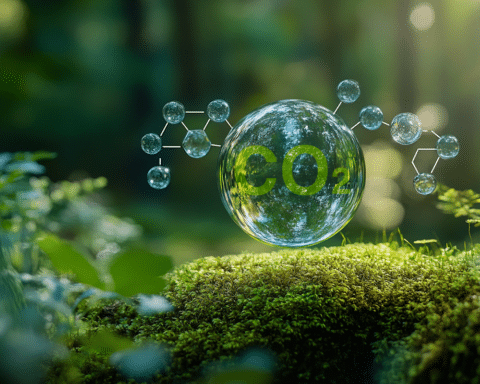Scientists have identified detecting and fixing methane leaks as crucial in mitigating global warming. To tackle this issue, Canadian company GHGSat has sent six satellites into orbit to search for these methane plumes. These satellites have made some concerning findings, including record-high methane emissions from the oil and gas sector and increasing emissions from coal mines globally. To fight against climate change, GHGSat intends to launch six more methane-tracking satellites by the end of the year. The company also plans to launch a satellite focusing on another environmental threat – carbon dioxide.
Stephane Germain, President of GHGSat, spoke about why he believes that companies and countries can take action to slow down global warming by having information about where the leaks are coming from. In this interview, Germain answers questions about the main challenges in reducing emissions, what can be done about the high methane emissions in the oil and gas industry, the success rate of fixing leaks found by GHGSat, and why the company names their satellites after children.
According to Germain, the hardest part about reducing emissions is not the technology but the culture change and actions that must be taken in different regions and environments. The goal is to make the data available so that more actions can be taken and more mitigation occurs.
Germain states that while there are efforts to reduce methane emissions in the oil and gas industry, more work needs to be done. The Biden administration has proposed new regulations to tighten emissions standards and make using new technologies to monitor and mitigate emissions easier.
When asked about the success rate of fixing leaks found by GHGSat, Germain acknowledges that it is currently in the single-digit percentage range worldwide. However, the company sees a huge opportunity to raise awareness among operators and sources so that they know their real emissions and can address them quickly.
Germain provides an example of GHGSat finding a leak and an operator fixing it in the Middle East, where a consultant was brought in to provide training and best practices to the operator. This resulted in one of the biggest emissions reductions the company has seen.
Germain also explained that the satellites are named after their children to remind them why they do what they do daily. The team at GHGSat wants to leave a better world for future generations, including their children.
The future of GHGSat is bright as the demand for their services will only increase with growing awareness of greenhouse gas emissions and more companies and countries taking steps to reduce them. GHGSat aims to lead the way in providing the data and information needed to drive action and make a real impact in combating climate change. The company views their satellite technology as just the beginning and is constantly exploring new and innovative ways to gather and use data to further its mission, including using artificial intelligence and machine learning to process and analyze data.
GHGSat sees itself as having a crucial role in addressing climate change and is dedicated to doing everything in its power to support this effort. They are optimistic about the future and believe their efforts will make a tangible difference.
Stephane Germain, President of GHGSat, has a message for the public and policymakers about the significance of reducing emissions. He says that reducing emissions is vital for ensuring a livable planet for future generations, as climate change is a reality that is happening right now. We must act now and take aggressive steps to reduce our emissions and transition to a low-carbon economy, which will require a collective effort from all of us – individuals, companies, and governments. The good news is that we have the technology and knowledge to make this transition; all we need is the determination to do it.
Germain believes that GHGSat can play a vital role in this effort by providing the necessary data and information to drive action and make real progress. He encourages everyone to support this cause and take action in their own lives to reduce their carbon footprint. Together, we can make a lasting difference.




